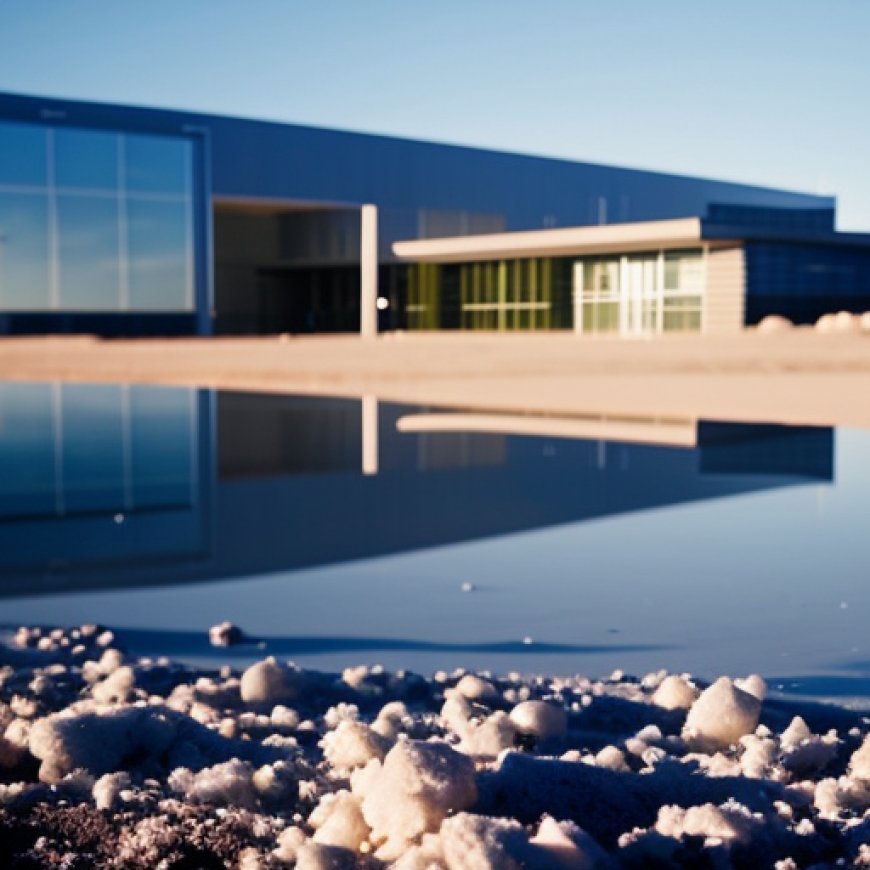Utah Clean Energy’s new Climate Innovation Center: In Pictures – Building Salt Lake
Utah Clean Energy's new Climate Innovation Center: In Pictures buildingsaltlake.com


Utah Clean Energy Constructs New Climate Innovation Center
Utah Clean Energy, a local nonprofit dedicated to promoting clean energy policy, renewable energy, and energy efficiency, has recently completed the construction of their new headquarters. The Climate Innovation Center, located at 215 S 400 E, serves as a model for incorporating clean energy technology into building projects.
Sustainable Building Materials
- The building was originally a single-story cinderblock structure built in 1955. It has been retrofitted into a two-story office building.
- To reduce embodied carbon, the existing cinderblock walls and steel ceiling beams were maintained.
- The roof is made of cross-laminated timber, and glulam beams support the second floor and roof.
- Reclaimed wood and recycled materials are used throughout the building.
Net-Zero Energy
- The building aims to be net-zero, with onsite power generation and storage.
- All-electric appliances are used for heating, cooling, and cooking.
- Rooftop solar panels and battery storage are installed.
- The building also features e-bike charging stations and EV chargers in six parking stalls.
Zero Energy Certification
The Climate Innovation Center is pursuing a Zero Energy certification from the International Living Future Institute. This performance-based certification requires tracking efficiency metrics for a year before it can be awarded.
Adaptive Reuse and Preservation Efforts
While Utah Clean Energy’s new headquarters serves as a demonstration project, adaptive reuse of existing structures often loses out to demolition and new construction. To address this issue, the Salt Lake City Council is considering zoning text amendments to incentivize adaptive reuse and preservation of culturally significant buildings.
Adaptive Reuse Incentives
- A zoning text amendment removes the minimum square footage requirement for adaptive reuse and permits additional uses, including residential.
Preservation Incentives
- A text amendment called ‘Preservation of a Principal Building’ aims to incentivize the preservation of structures that are at least fifty years old.
- Incentives include reduced parking, minimum lot sizes, setbacks, and additional height (with design review) in some zones.
These proposed amendments will be voted on in the future.
Conclusion
The construction of Utah Clean Energy’s Climate Innovation Center showcases the incorporation of sustainable building materials and net-zero energy features. Additionally, efforts to incentivize adaptive reuse and preservation of existing structures are being considered by the Salt Lake City Council. These initiatives align with the Sustainable Development Goals (SDGs), particularly Goal 11: Sustainable Cities and Communities, and Goal 13: Climate Action.
Copyright: Dive into this article, curated with care by SDG Investors Inc. Our advanced AI technology searches through vast amounts of data to spotlight how we are all moving forward with the Sustainable Development Goals. While we own the rights to this content, we invite you to share it to help spread knowledge and spark action on the SDGs.
Fuente: buildingsaltlake.com

Join us, as fellow seekers of change, on a transformative journey at https://sdgtalks.ai/welcome, where you can become a member and actively contribute to shaping a brighter future.







